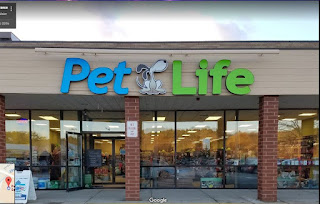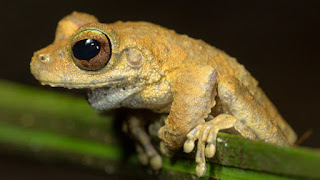Texas Capitol Snake Week brings rattlesnakes to Austin for 28th year - Houston Chronicle

AUSTIN — If you overheard someone discussing a "pit of vipers" at the Texas Capitol, you might assume they were talking about either the House or the Senate. This week you would be wrong.
The Jaycees from Sweetwater, about 40 minutes outside Abilene, are visiting the Capitol this week to promote the town's 64th annual "World's Largest Rattlesnake Roundup," taking place the second weekend of March. Joining them in Austin are about a dozen Western diamondback rattlesnakes.
'ONE SHOT AND THE SNAKE WAS DOWN: Texas sheriff's deputy shoots a rattlesnake while investigating a stolen vehicle
The Jaycees set up in the open-air rotunda in the Capitol extension on Tuesday. Wearing matching red vests covered with snake-themed patches, most of them held thin metal rods with hooks on the ends that they used to manipulate the snakes. Several were placed on the state seal in the middle of the circular area, with handlers prodding them to keep them from slithering off.
Every so often, a wrangler would use his or her hook to lift the snake onto a folding table, pin it down, then grab it and hold it at the base of its jaws, keeping the head immobilized. Several walked around the rotunda holding snakes in this way and chatting with passers by. The buzz of the snake's rattles sounded in the background at all times.
Outside the elevators down the hall from the snakes, a lobbyist remarked to some people he was standing with: "What says Texas more than rattlesnakes at the Capitol?"
The annual visit from the Sweetwater group is colloquially known as "Snake Week." It has been happening for 28 years, with informal visits even before then. Over a few hours on Tuesday morning, Capitol visitors — including school groups and tourists — stopped by, as well as lobbyists, legislative staff and assorted members of the Legislature.
Politicians usually enjoy taking photos with the snakes, said David Sager, the head handler. Throughout Tuesday morning, visitors who were a little more tentative were photographed next to a handler holding a snake, while the bolder ones were given the "necklace," with a snake draped over them.
In years past, both Gov. Greg Abbott and then-Gov. Rick Perry have stopped by to take pictures, Sager said. One year, Perry asked Sager if he could hold the snake. Sager said sure, and without hesitating, without even being shown the proper way to hold the head to keep the fangs immobilized, Perry pinched his hand over the snake's mouth to pin it shut and took the snake into his arms.
"I've never done a handoff like that before," Sager said.
This year, Abbott's staff let the Jaycees know he wasn't going to be able to come by, Sager said, although he did a few years ago.
"I like what you're doing and I think y'all are good," Abbott, who is paralyzed and uses a wheelchair, said while getting his picture taken with a snake, Sager recalled. "But if you get me bit, make sure it's my leg so I won't feel it."
Above the rotunda is a circular walkway that looks down on the ground floor, which served as the snake pit, and a larger crowd stayed up there, preferring to keep a safe distance from the vipers.
At one point, the mother of a young boy stepped closer to the snakes from the outside of the rotunda, turning back and calling for the boy to come closer. He took two tentative steps, and then ran back to the outside wall, his eyes wide and staring at the snakes. Over the next few minutes he inched forward until he joined his mom closer to the middle.
Many of the Jaycees said they have handled rattlesnakes routinely for years, even decades. But are they still afraid of them?
"Always. Still am," Sager said. "If you don't have a little fear, there's something wrong with you."
At the roundup, the Jayces collect thousands of pounds of snakes. About 5 percent are killed and their meat is served at the roundup, while the remaining 95 percent are sold to outside buyers who then resell it. Frozen rattlesnake meat can go for $50 a pound, Sager said.
His favorite way to prepare it: pressure-cook it until it turns white and falls off the bone, when it looks like chicken breast. Then stir fry it or make fajitas. At the festival, the most popular method is deep-fried.
The snakes are not de-fanged or de-venomized — as the "milking" doesn't take place until the roundup itself. On the hand of one of the handlers you could see venom that had dripped from a snake's fangs. It was about the color of orange juice with a consistency similar to molasses.
The venom is used to create antivenom, as well as for certain diabetes and blood pressure medications, plus cancer research.
There is one other in-demand product from the snakes that the Jaycees don't sell: the gallbladders.
In certain Asian cultures, the gallbladders are believed to be a powerful aphrodisiac, Sager said. Some people travel to Sweetwater from around the country, often Chicago or San Francisco, looking to obtain the gallbladders, but the Jaycees have avoided getting into that business.
Outside the coliseum where the event is held and where snakes are milked, slaughtered and prepared for eating, there are buckets full of the innards. One year, several visitors snuck back there and hung the guts over fencing in the sun, Sager said.
After it dried out, they returned later to collect the gallbladders, which looked like little plums.
edward.mckinley@chron.com




Comments
Post a Comment